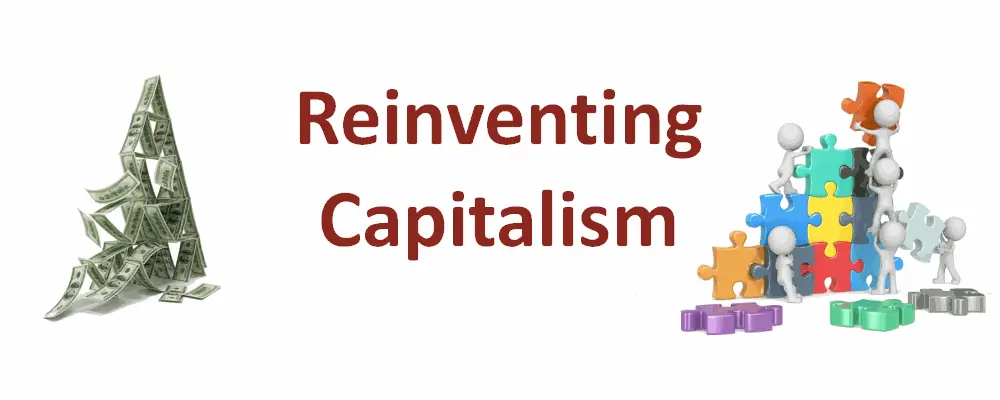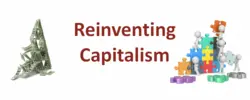What it’s about
Reinventing Capitalism – The Story
How we broke money, and how we fix it – from inside and out
Core purpose
We know that money systems are not delivering happiness, sustainability or stability and need to respond to basic questions. What has to change for us to be happier? What does it take to create a healthy and sustainable relationship with money in tune with its original purpose – supporting human personal, business and commercial interactions? This book describes and analyses:-
2. our collective beliefs and illusions about money
3. the ways that those attitudes and beliefs have driven personal and organisational behaviour
4. how they drove systems that we have built to operate money and how these have become so obviously inadequate to our needs.
The analysis leads to a joined-
Themes
We treat money as real in ways which it is not, and our emotional relationships with it are often unconscious and unhelpful.
The world has changed since capitalism began and is now highly complex. Our values have also changed and more change can be predicted. Our systems for money were designed for a simpler world and less evolved values and must adapt to facilitate the future that is emerging.
The misunderstanding about what is “real” has led the world to replace capitalism with debtism and to confuse growth in money with growth in goods, services or relationships. The result has been chronic instability and a crash which is liable to be repeated.
Making money and growth more important than everything else has distorted the way that we govern corporations and the way that we make decisions. We are failing to balance the needs of those who supply money, intellectual capital, physical effort and goods and services or the external requirements of regulators, taxation systems, planetary resources, climate and ecology, local communities and societal health.
We have failed to grasp how money behaves over time, how flow and circulation are as significant as quantity leading to poor decisions, personally and societally.
We are torn between money-
We apply simplistic and linear decision-
We need a system that is responsive, self-
Conclusion
We need changes in all four areas. Our beliefs and our systems must evolve in tandem, and rapidly. The ways that we thought about money formed the structures and operating models of our businesses, organisations and economic systems. The structures and operating models guide our behaviours and constrain what we believe is possible.
The book makes 36 proposals for a higher perspective from which both our thinking and our systems can evolve together into something new. It offers a basis for a further collaboration between those people who are pioneering aspects of the new thinking in order to design the next stage of human social economics and to replace the current fear of change with pragmatic vision, hope and optimism.

